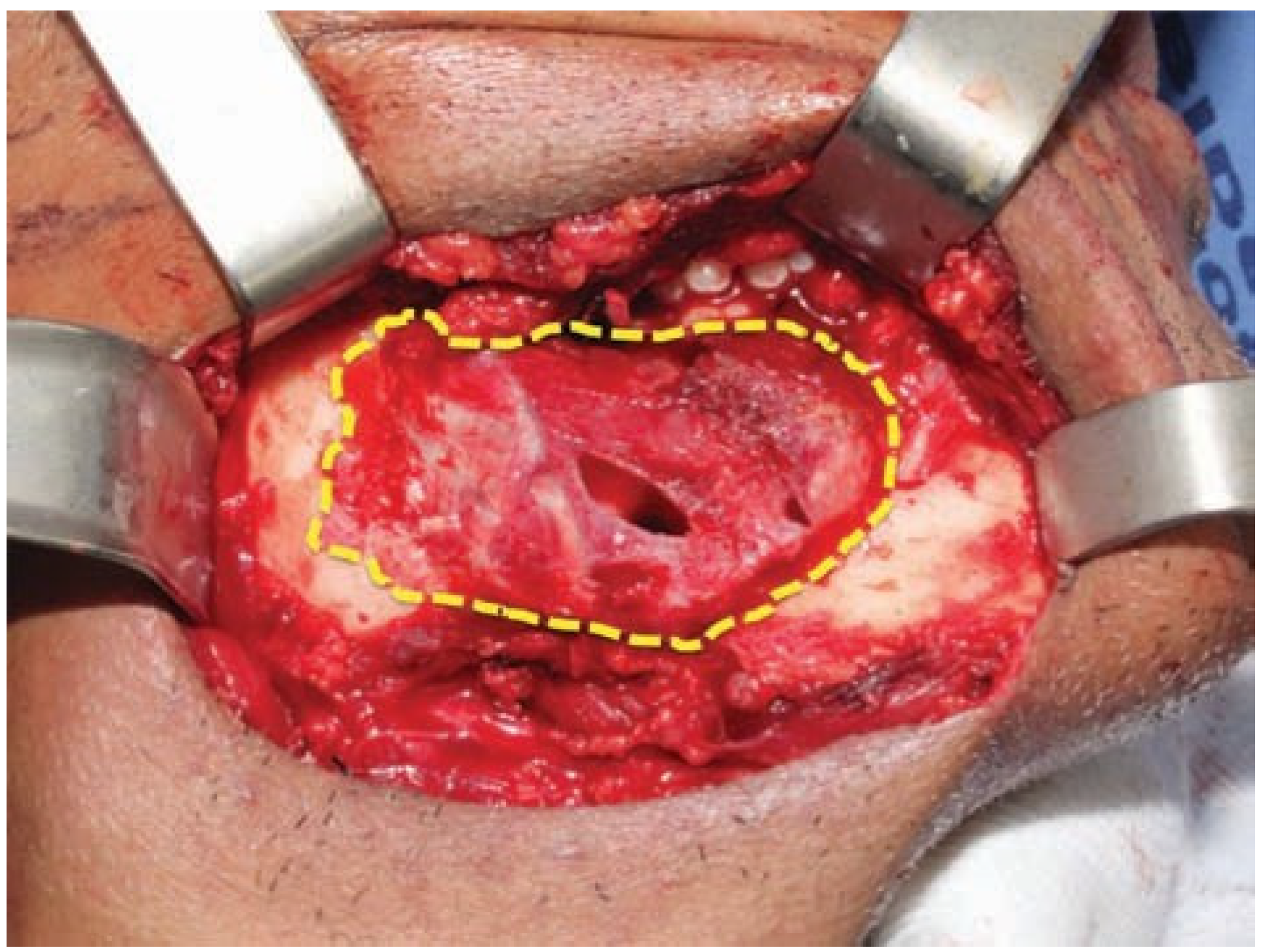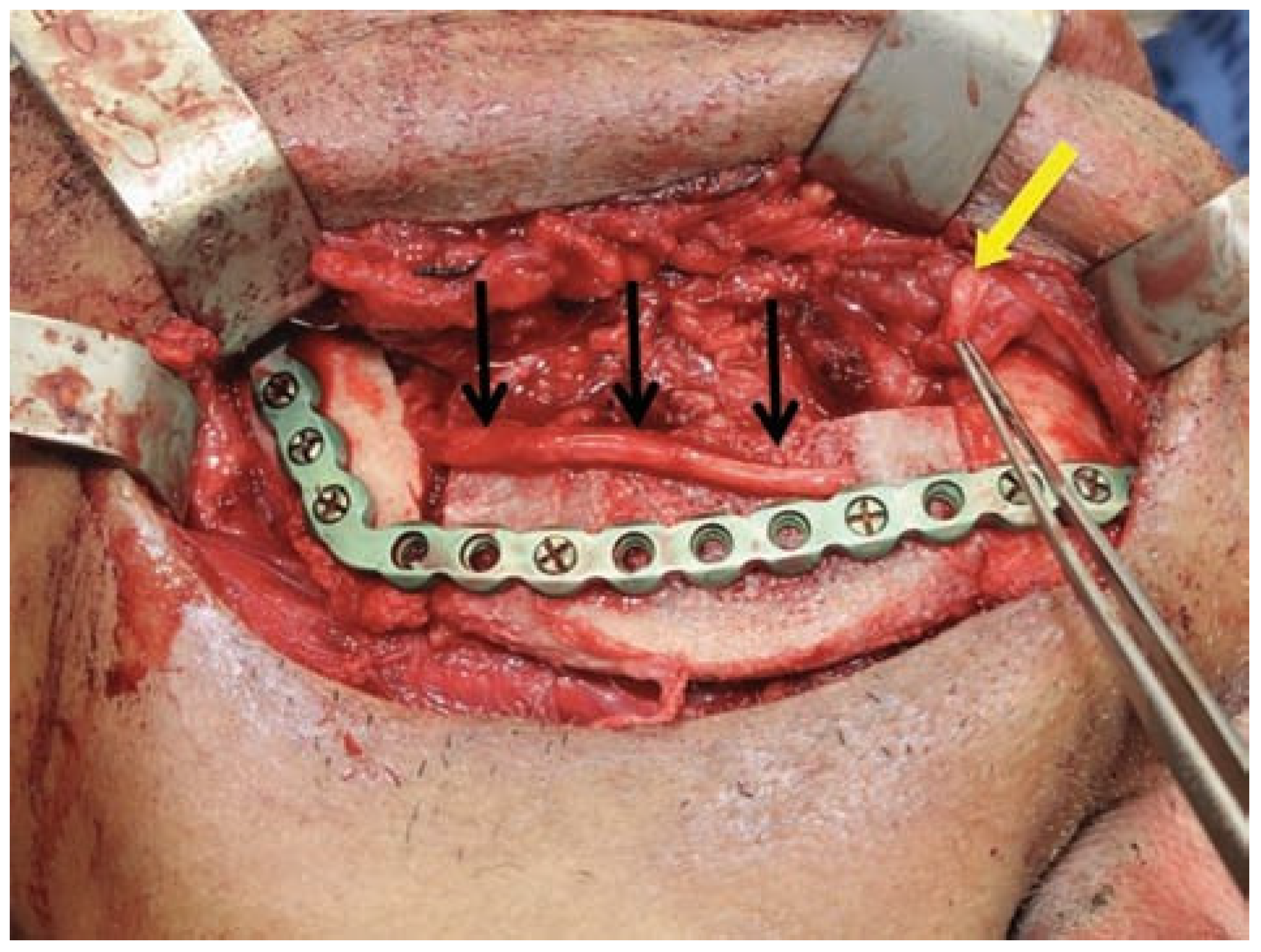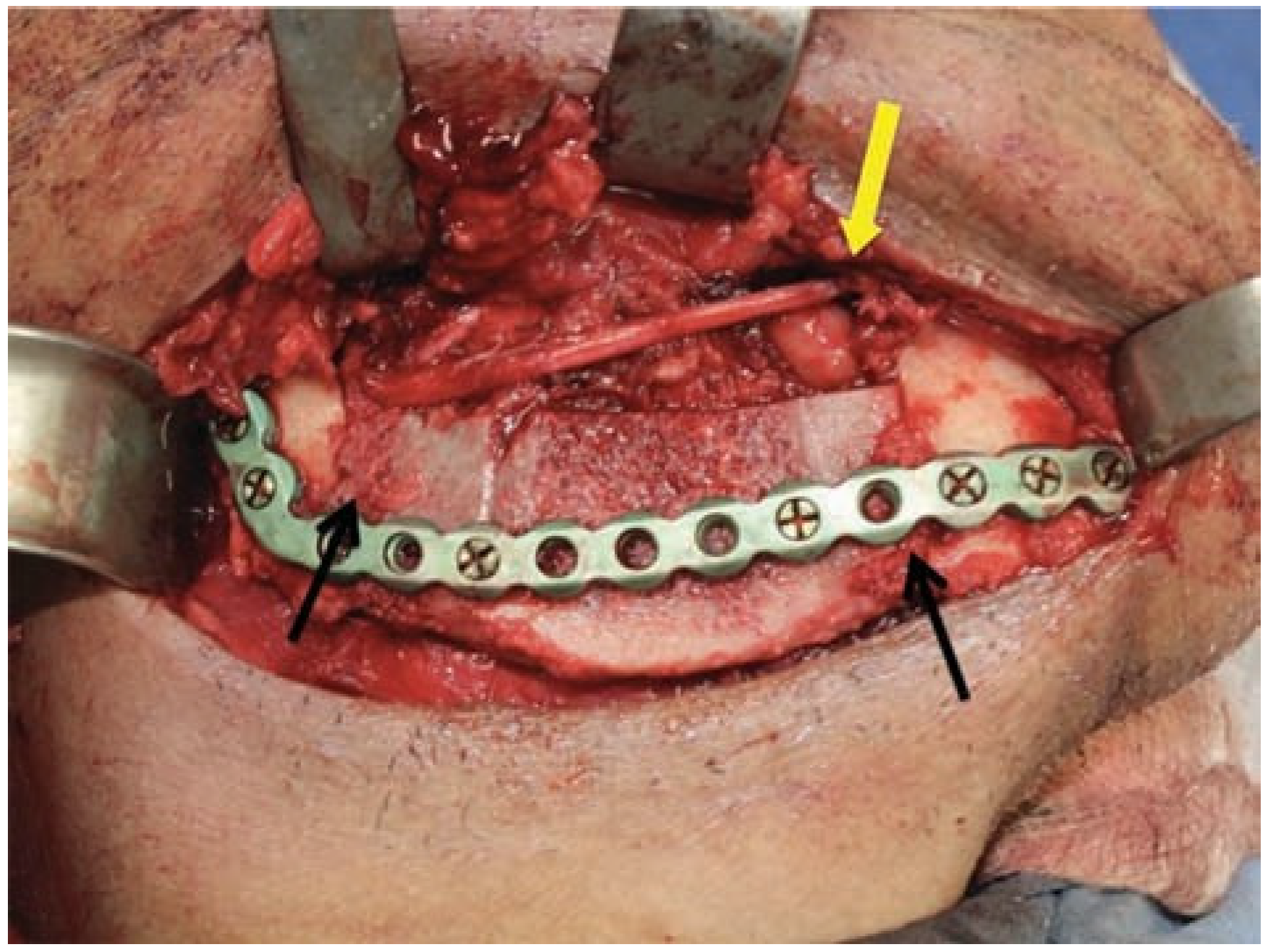The Pull-Through Technique: A Viable Option for Preserving the Inferior Alveolar Nerve During Surgical Resection
Abstract
:Institutional Review Board Statement
Conflicts of Interest
References
- Hammarfjord, O.; Roslund, J.; Abrahamsson, P.; et al. Surgical treatment of recurring ameloblastoma, are there options? Br J Oral Maxillofac Surg 2013, 51, 762–766. [Google Scholar]
- Stanec, S.; Stanec, Z. Reconstruction of upper-extremity peripheral-nerve injuries with ePTFE conduits. J Reconstr Microsurg 1998, 14, 227–232. [Google Scholar] [CrossRef]
- Poort, L.J.; van Neck, J.W.; van der Wal, K.G. Sensory testing of inferior alveolar nerve injuries: A review of methods used in prospective studies. J Oral Maxillofac Surg 2009, 67, 292–300. [Google Scholar] [CrossRef] [PubMed]




© 2016 by the author. The Author(s) 2016.
Share and Cite
Leite, G.B.; Sartoretto, S.C.; Lima, F.C.A.; Calasans-Maia, M.; Louro, R.S. The Pull-Through Technique: A Viable Option for Preserving the Inferior Alveolar Nerve During Surgical Resection. Craniomaxillofac. Trauma Reconstr. 2017, 10, 329-331. https://doi.org/10.1055/s-0036-1593893
Leite GB, Sartoretto SC, Lima FCA, Calasans-Maia M, Louro RS. The Pull-Through Technique: A Viable Option for Preserving the Inferior Alveolar Nerve During Surgical Resection. Craniomaxillofacial Trauma & Reconstruction. 2017; 10(4):329-331. https://doi.org/10.1055/s-0036-1593893
Chicago/Turabian StyleLeite, Gustavo Boehmer, Suelen Cristina Sartoretto, Fernando César Amazonas Lima, Mônica Calasans-Maia, and Rafael Seabra Louro. 2017. "The Pull-Through Technique: A Viable Option for Preserving the Inferior Alveolar Nerve During Surgical Resection" Craniomaxillofacial Trauma & Reconstruction 10, no. 4: 329-331. https://doi.org/10.1055/s-0036-1593893
APA StyleLeite, G. B., Sartoretto, S. C., Lima, F. C. A., Calasans-Maia, M., & Louro, R. S. (2017). The Pull-Through Technique: A Viable Option for Preserving the Inferior Alveolar Nerve During Surgical Resection. Craniomaxillofacial Trauma & Reconstruction, 10(4), 329-331. https://doi.org/10.1055/s-0036-1593893


